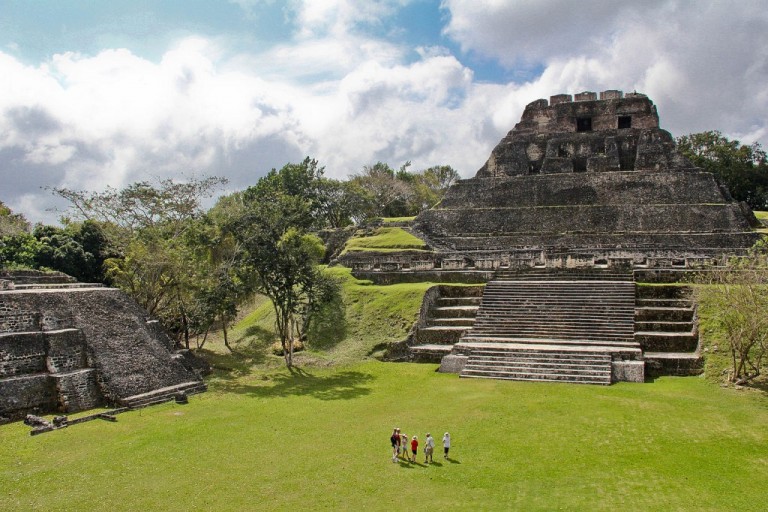“[The tomb] is one of the largest burial chambers we have ever found,” – Dr. Jaime Awe.

PHOTO: cahalpech.com
XUNANTUNICH, BELIZE – Archaeologist Dr. Jaime Awe made history when he excavated a Mayan tomb at the site of Xunatunich.
It’s surprising this find hasn’t been made before. Archaeologists have been working on the site since the 1890s. That’s a lot of archaeological excavations! All this time, no one knew that just eight meters below the surface of one of Xunatunich’s central buildings lay the largest Mayan tomb ever, just waiting to be found.
Down in the depths of the tomb, in the dark and wet interior, they found the remains of a man buried with all the fanfare and importance once might expect of a great and powerful ruler. Among the bones, Archaeologists found obsidian knives, pots, vases, jade beads, and the remains of an animal.
Using anthropological techniques, researchers have determined that the man buried at the site was probably in his late 20s to early 30s- an early death, even for the ancient world- and he definitely had religious significance.
Safe Passage to the Underworld
The obsidian knives found at the site are a trademark of Mayan culture. You can hardly sift through a Mayan site without finding one or two. Obsidian was laced throughout Mayan daily life and in ritual use. It was available to every household, and was used in butchery, hunting, food preparation, and other various household tasks. But, beyond that, Obsidian was also an important religious stone.
Mayans considered Obsidian to be the “blood of the earth”. It was often used in blood-letting sacrificial activities, and in temple dedications and other religious activities.
The jade beads are also extremely significant. Jade, with its beautiful blue-green color that mirrors water and the sky, was believed to be directly connected to the circle of life and death in the Mayan mind. Jade beads were often placed on the mouths of the dead, and were believed to take and hold the spirit of the deceased person.
Artifacts like this give us clues to who the man buried in the tomb at Xunatunich was, and how the people who buried him felt about his life. Clearly, he was someone of great importance, buried with many valuable grave goods that he could take with him to the underworld. Some were stored in the tomb to protect his spirit on its trip there, some, like the obsidian knives, hold both mundane and religious significance. It’s a chamber where death and life are deeply entwined.
![Vase decorated with the Jaguar God of the Underworld. [PHOTO: Wikimedia]](https://historythings.com/wp-content/uploads/2016/08/220px-Urna_funeraria_maya_Kinich_Ahau_M._América_Inv.91-11-12_02.jpg)
Vase decorated with the Jaguar God of the Underworld. [PHOTO: Wikimedia]
The Mayans had several Jaguar Gods in their pantheon. The most significant and relevant is called “The Jaguar God of Terrestrial Fire and War”, also sometimes referred to as the “Night Sun”. He’s often also referred to as the “Jaguar God of the Underworld”. He held a lot of influence over the spheres of war and death, and was often worshiped in complex rituals of fire.
Perhaps the jaguar buried with this dead man was meant to be a sacrifice to the Jaguar God, or, perhaps the jaguar was meant to personify the Jaguar God and guide him on his passage to the underworld.
It’s an undisputed fact that the man buried at Xunatunich was definitely a ruler of the Maya. His tomb is too big and too important for him not to be. However, whether that means he was a priest or a great warrior or a mix of the two is up in the air. His grave goods have clear ties to both. We won’t know until further research is done on the site.

